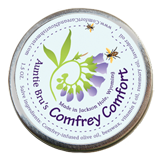460° Bread
Published in Chef Notes, Jackson Hole News & Guide, March 9, 2011
Shared by Master Bakers Jerod Pfeffer & Ty Mack
460° Bakery
If good bread is the staff of life then what is excellent, organic European-style hearth bread? It’s a ticket to happiness both in the baking and the eating.
Being a huge fan of bakery breads, I haven’t bought a commercial store-bought loaf in many years. Read labels and you won’t either. Why subject anyone to mediocre quality items filled with dough conditioners, stabilizers and preservatives when you can support local tradesmen and women? I buy from many local bakers. I’m grateful for all of them.
A new addition to the bread selection in the market lately has the name 460°. It didn’t take long to find out more. 460° is the optimum oven temperature to create perfectly crusty loaves. 460° breads in Driggs is a partnership between Jerod Pfeffer and Ty Mack, both Renaissance men. It’s an interesting place to visit.
Jerod Pfeffer was raised on Scott Air Force Base near St. Louis. When his father retired from the service the family moved to Winona, Minnesota on the Mississippi River. At Montana State University in Bozeman, he majored in electrical engineering and journalism. There he met Sage Hibbard, his wife, who was raised hereabouts and brought him here for the first time.
Pfeffer’s construction work to raise college funding taught him skills that supported him as his live evolved. His curiosity led him to timber frame, dry stone, straw bale and straw clay construction. He and Sage spent ten years building their house near Felt, Idaho. He wrote a book published by Gibbs-Smith Publishers about natural building and timber frame homes.
His “route to bread” started in his wood fired oven in Felt. Pfeffer shared that his urge for self-sufficiency led him to bake bread every week for two years. To him it seemed a parallel to the steps of building and woodworking. Pfeffer explained, “Every week I produced bricks of bread and reams of paper.” Scientifically plotting his progress, or lack of it, led him to the San Francisco Baking Institute. It was a revelation. He took a couple more classes. Bread was his future.
Ty Mack grew up in Lander. In his early years his mom was a big influence. She cooked and baked and even milked the cows. He recalls with fondness that she taught him to bake the whole wheat and oat bread that sustained their household. He passed through Jackson for ski races here and nearby while still in high school. He made friends with Sage Hibbard while they were in high school. They all met in Bozeman where Mack studied geo-hydrology.
Mack’s degree led him to the position as Deputy Tribal Water Engineer for the Eastern Shoshone and Northern Arapaho Tribes working with concerns over water rights, mediating ditch disputes plus managing a reservoir and canal system. For the state of Vermont Mack was the Fluvial Erosion Hazards Program Coordinator, working with communities to use zoning proactively to protect stream corridors and mitigate flood losses. For a break, he and his wife Rose traveled extensively in South America. In a small surf town in Brazil their funds had run out. They together questioned their future and knew it was time to return to the States. Mack interviewed for his new job from the Denver airport. Hired by Friends of the Teton River as their new Streamflow Restoration Director, the couple headed for Teton County, Idaho in the summer of 2008. His work was mostly working with farmers to restore late season streamflows to the river.
The reuniting of friends in Teton Valley has been formative. Mack shared that he “got the bread bug from Jerod.” After a stint grounding themselves in the community and stabilizing financially, Mack realized that rather than save or invest earnings, he would rather become part of the community economy. “I wanted to become a local food producer, to create and grow in a tangible way,” he said. Pfeffer had told me of his love for bread baking, “In a global world this is still local. We take bread out of the ovens in the late morning that is in the grocery store that afternoon.”
As they moved into the world of commercial baking, both have studied at the San Francisco Baking Institute to learn old world skills in a disciplined way. They belong to the Bread Bakers Guild of America. When they found their location they searched for a Bon Gard French deck oven, (it’s as big as my kitchen & dining room)which they found used, ten years old in Chicago. They spent ten days assembling it upon arrival. They created a mill room in which they grind organic whole grains. They researched their sources for the finest quality ingredients.
My feeling is that these are fortunate people. They have an engaging partnership. The two men bake seven days a week, some days lighter for each of them and Sundays for commercial clients only. I found out from my secret sources that as these folks play music together. Rose plays fiddle, Sage plays claw hammer banjo, Jerod plays guitar and Ty plays mandolin. I am told that Tyrel Mack is a poet, a cowboy bard of some talent. Their lives are well rounded and fulfilling. Their business is growing.
Their breads are available at Jackson Whole Grocer, the Aspens Market, Warbirds Cafe, Victor Valley Market, Pearl Street Meat & Fish, Barrels and Bins, Couloir, The Trap Bar, Spoons, Forage, Nosh, the Cheese Burger Factory, and Time Out, the cafe upstairs at MD nurseries, JH Organics and the online Glory Bowl Soup Company. They love interaction with the public and plan to be at farmers’ markets this summer. They will have shares in local CSA’s (Community Supported Agriculture) including Cosmic Apple and Snowdrift Farms.
When we spoke of recipe sharing both admitted they are not chefs. They offered to share how to make crousades and croutons from their day old breads, plus French toast from their cranberry walnut. My thought reflects the feedback that I hear about their breads. There are two opinions I hear, often in the same sentence, “It’s great bread. It’s expensive.” They complied with my wish to share what goes into creating a loaf of bread.
Olive Thyme Recipe
Makes Four 500 g loaves
Process:
6 AM Day 1 – Levain Build
54 g starter, 180 g flour, 180 g water (75 degrees)
The olive thyme uses a wild yeast preferment (starter) that is fed twice a day with equal parts organic flour and water. In order to use the starter in a dough, we take a small portion of the starter and “build” it up to a larger quantity, and ferment it for 4-6 hours before mixing into the dough.
9 AM Day 1 – Prepare and Scale Ingredients
3 g fresh thyme, 240 g kalamata olives, 827 g organic flour, 0.83 g dry instant yeast, 20.67 g salt
We use fresh thyme and plump kalamata olives. The thyme comes in large twiggy bunches, so we strip away only the tender and fragrant leaves for use in the bread. The kalamata olives must be soaked in water (so they are not too salty), drained, and chopped in half to ensure that no pits end up in the bread. At this point we also scale all the dry ingredients in preparation for mixing. At the heart of the Olive Thyme is organic flour from Central Milling in Logan, Utah. The flour is milled at a hydropowered mill using organic hard red spring wheat from Utah, Idaho, and Montana. Unlike many modern flours, it has a lower protein content, similar to the flours that have been used in Europe for centuries to make traditional hearth breads.
11 AM Day 1, or whenever the preferment is ripe – Mixing the Dough
Dry ingredients, 413 g liquid levain, 496 g water, olives and thyme
The time at which the dough is mixed is determined by when the levain is ripe. When ripe, the levain is bubbly, tripled in bulk, with a strong, tangy odor. To mix the dough, we combine all the ingredients except the olives and thyme in our spiral mixer. To get the proper results we need a dough temperature after mixing between 73 and 75 degrees, so the exact right temperature water must be used (this varies depending upon the temperature of the room). We mix the dough on first speed to combine the ingredients, and then on second speed for several minutes to achieve just the right amount of gluten development without oxidizing the dough (which would sacrifice flavor). Spiral mixers mix dough very gently, with the bowl rotating around a stationary spiral hook. Once the dough is developed, we mix in the kalamata olives and thyme on first speed until they are evenly distributed and transfer the dough into lidded tubs. We record the temperature of the dough so we can cool or warm it slightly (by putting it in a warmer or cooler environment for the bulk fermentation) if the temperature is outside the desired range.
11-12:30 Day 1 – Bulk Fermentation
In order to build strength and flavor, the dough undergoes a 1.5 hour bulk fermentation at 75 to 80, with one hand fold at 45 min. The fold will add strength to the dough without any risk of oxidation.
12:30 Day 1 – Divide and Preshape
The dough is dumped onto a floured table, divided into 500g chunks, and gently formed into “boules” (round preshapes).
1:00 Day 1– Final Shaping
After 30 minutes of rest in a draft-free rack, the preshapes are reshaped by hand into “batards” (oblong shapes) with a series of gentle rolling motions and placed, seam side up, into floured willow baskets. The proofing baskets provide support to the loaf during the long final proof.
1PM Day 1 to 7AM Day 2 – Final Proof (Rise)
The Olive Thyme spends the next 18 hours slowly proofing at 45 degrees. This extended final proof builds lots of flavor and enhances digestibility.
7AM Day 2 – The Bake
24 minutes at 460°
Finally, 25 hours after the process began, the olive thyme loaf is floured, scored (the top surface sliced with a razor blade) and gently transferred onto the masonry hearth of our imported French steam tube deck oven. After an intense injection of steam, the loaf will bake for about 24 minutes at 460° (of course!). Our 12,000 lb. oven produces amazing results. The high temperature, masonry deck, and plentiful steam combine to allow the loaf to double in bulk in the first several minutes of the bake, a phenomenon called “oven spring”. Late in the bake, as the loaf takes on a deep golden brown color, maillard reactions create flavor compounds which are driven deep into the loaf, giving it complex, intense flavors not found in lightly baked loaves produced in a cooler oven.



 Auntie Bru's Comfrey Comfort is a natural salve made with love in Jackson Hole, Wyoming. Available at
Auntie Bru's Comfrey Comfort is a natural salve made with love in Jackson Hole, Wyoming. Available at 